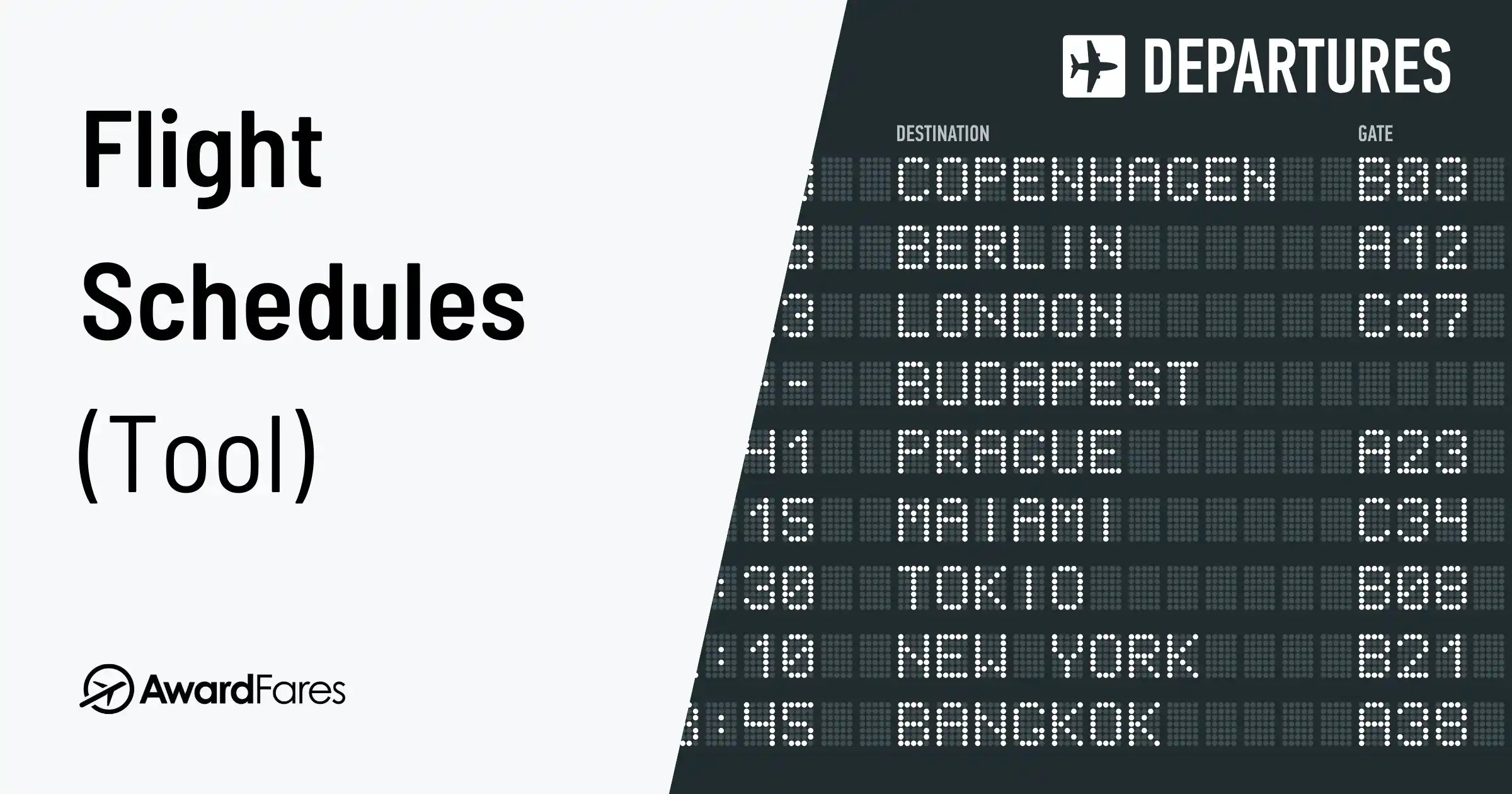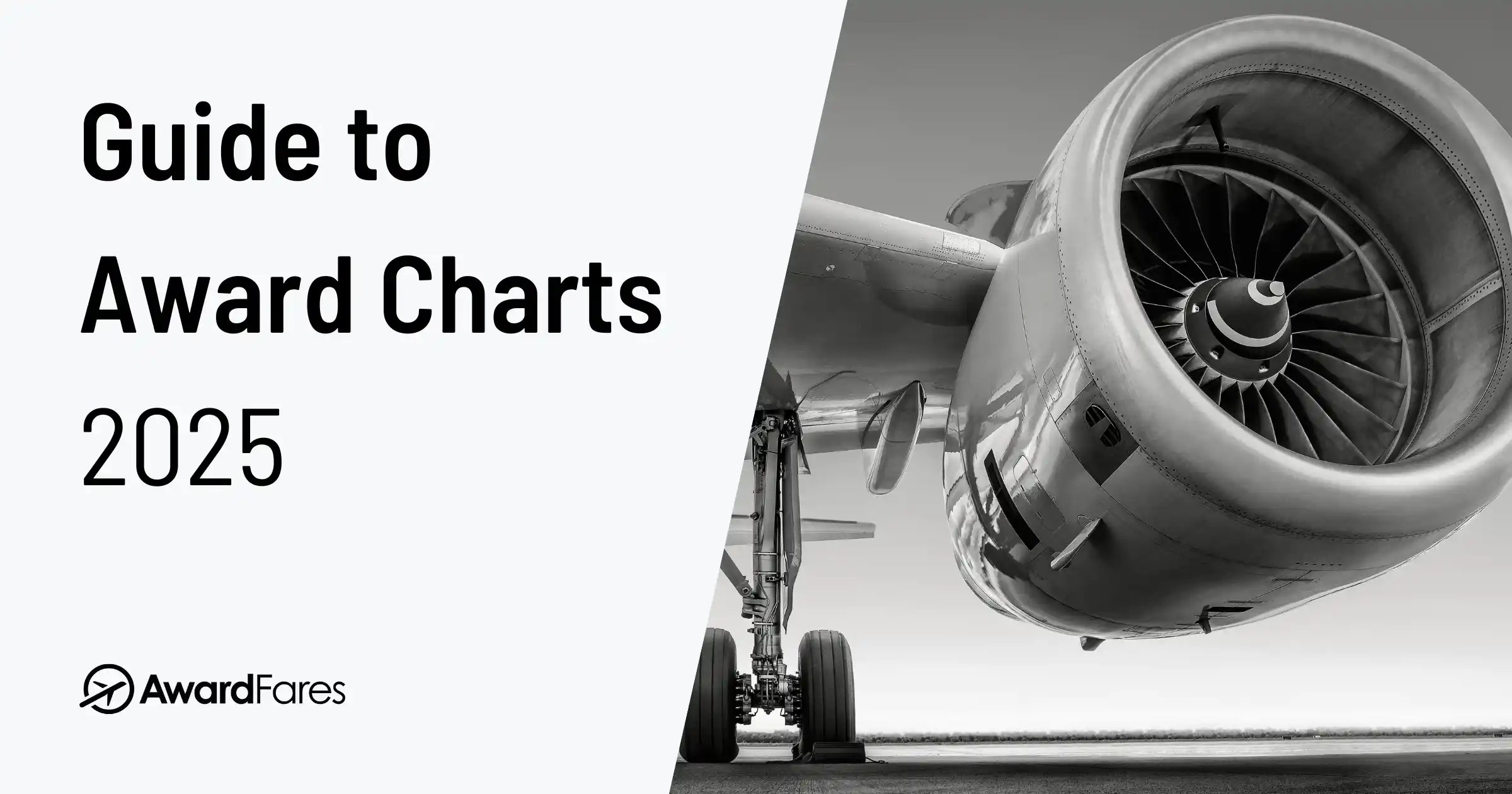Ever looked at a flight ticket and wondered what the single letter like ‘Y’, ‘W’, or ‘J’ means? You’re not alone. The world of airline booking class codes, also known as fare classes, can feel like a cryptic language. These codes are the backbone of airline pricing, determining everything from your ticket’s cost and flexibility to how many miles you earn.
Understanding these codes is the key to unlocking advanced travel strategies. This guide will demystify airline booking classes and show you how to use the AwardFares Flight Schedules tool to see the exact seat availability for each code, a powerful advantage for booking specific fares, planning upgrades, or even for staff travel.
What You'll Learn In This Guide
- Decode Any Fare: Learn the meaning behind common booking class codes like F (First), J (Business), Y (Full-Fare Economy), and more.
- Check Real-Time Seat Inventory: Use the Flight Schedules tool to see the exact number of seats available in each booking class for any flight.
- Find Specific Airline Codes: Get insights into fare codes for major airlines like United, American, Delta, and others.
- A Powerful Tool for Staff Travelers: See how to complement services like myidtravel by checking live seat availability before you list.
- Integrate with Seat Maps: Go directly from a flight schedule to its seat map to see which seats are open.
In This Guide
What Are Airline Booking Class Codes (Fare Classes)?
Booking Class Codes (or Fare Classes) are the single-letter codes (e.g., Y, M, J, F) that airlines use to manage their seat inventory. While you might book a “Business Class” or “Economy Class” ticket (these are called Cabin Classes), the booking code specifies the type of fare you purchased within that cabin.
For example, two passengers sitting next to each other in Economy could have different booking codes. One might be on a full-fare, flexible ‘Y’ class ticket, while the other is on a deeply discounted, restrictive ‘T’ class ticket.
- Seat Inventory & Fare Buckets: Each booking class corresponds to a “fare bucket,” which is the pool of seats an airline is willing to sell at a particular price with specific rules. The Flight Schedules tool lets you see how many seats are left in each bucket.
- Yield Management: Airlines use these codes for yield management, the science of maximizing revenue. They can release more seats in cheaper buckets to fill the plane or restrict them to encourage higher-priced bookings.
- Rules & Benefits: The booking class dictates the rules of your ticket: mileage accrual, upgrade eligibility, change fees, and refundability.
Common Booking Class Codes Chart
While codes vary significantly between airlines, some letters have a generally accepted meaning across the industry. Here’s a quick reference chart.
| Cabin Class | Common Codes | General Meaning & Characteristics |
|---|---|---|
| First Class | F, A, P | F is typically full-fare First Class. A and P are often discounted First Class or award/upgrade inventory. Highest level of service and most expensive. |
| Business Class | J, C, D, I, Z | J and C are usually full-fare Business Class. D, I, Z are common for discounted Business Class or award/upgrade inventory. |
| Premium Economy | W, R, G | W is the most common code for full-fare Premium Economy. R or G can be used for discounted or award seats in this cabin. |
| Full-Fare Economy | Y | The most expensive, fully flexible, and refundable Economy ticket. Often earns 100% of miles and has high priority for upgrades. |
| Discounted Economy | B, H, M, K, L, Q, V | A wide range of codes representing various levels of discounted Economy fares. The closer to ‘Y’, the more expensive and flexible they tend to be. |
| Deep-Discount Economy | N, S, T, E, O | These are typically the cheapest, most restrictive Economy fares. They may have strict no-change/no-refund rules and often earn few or no miles. |
| Award/Special | X, I | X is a very common code for Economy award seats (using miles), and I is frequently used for Business award seats across many alliances. |
Airline-Specific Booking Class Codes (United, American, Delta, etc.)
It is critical to remember that the chart above is a general guide. Each airline defines its own fare codes. A ‘W’ on United might be a standard Economy fare, while on another airline, it’s Premium Economy.
Our Flight Schedules tool shows you the actual codes for the flight you’re looking at. Here are some examples for major US carriers to illustrate the differences:
| Airline | Common First/Business Codes | Common Premium Economy Codes | Common Economy Codes | Common Basic Economy |
|---|---|---|---|---|
| American Airlines | J, R, I (Business) | W, P | Y, H, K, M, L, V, G, S, N, Q, O | B |
| Delta Air Lines | J, C, D, I, Z (Business) | W, S | Y, B, M, H, Q, K, L, U, T, X, V, E | E |
| United Airlines | J, C, D, Z, P (Business) | O, A, R | Y, B, M, E, U, H, Q, V, W, S, T, L, K, G | N |
A Note for Staff Travelers (myidtravel, ZED Fares)
If you’re an airline employee or eligible family member who uses myidtravel or ZED (Zonal Employee Discount) fares for non-rev travel, you know that success depends on seat availability. While myidtravel provides a general load indicator (the smiley faces), it doesn’t show you the real-time, granular seat count available to the public.
This is where the AwardFares Flight Schedules tool is an invaluable companion.
- Check the Real Numbers: Before listing on myidtravel, use our tool to see the actual number of seats available for public sale in each booking class. If a flight shows
Y9 J9(meaning at least 9 seats in both Economy and Business), your chances of getting on are excellent. - Make Informed Decisions: If a flight shows
Y1 J0, you know Economy is tight and Business is full, so you might choose a different flight or routing. This provides much more data than the general load indicators alone. - Find Open Flights: Quickly scan multiple flights or dates to find the one with the best availability, saving you time and reducing the stress of being stuck at the gate.
While our tool doesn’t show employee-specific data, it gives you a precise picture of the commercial seat inventory, which is the most reliable public indicator of your chances as a non-rev traveler.
How to Use the Flight Schedules Tool
Here is a step-by-step guide to finding the flight information you need.
1. Log in to your AwardFares account (or sign-up).
2. Under Tools, select Flight Schedules.
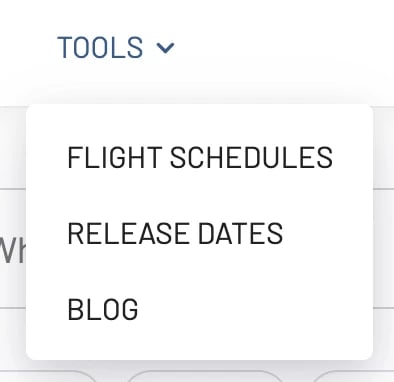
3. Enter Origin, Destination and Date, and hit Search.
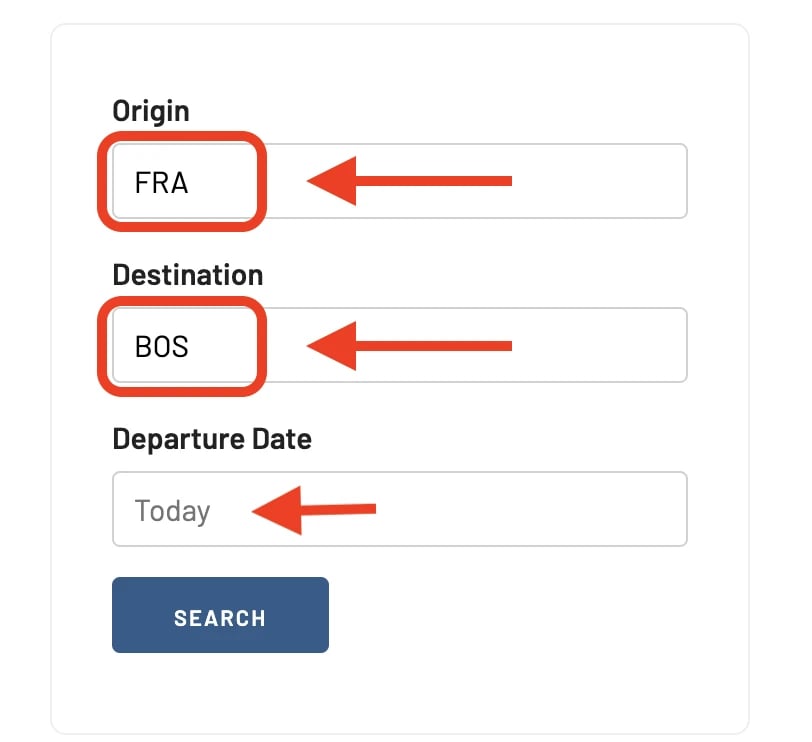
Pro Tip: Use Airport Codes
For this advanced tool, it’s crucial to be specific. Always use the three-letter IATA airport code for both origin and destination (e.g., FRA for Frankfurt, BOS for Boston). This ensures you get the exact schedule for that airport, not a metropolitan area.
4. Check the results on the right
On the right side of the screen (Desktop) or below (mobile), you’ll see a list of all the flights for that date, including both direct and connecting options.
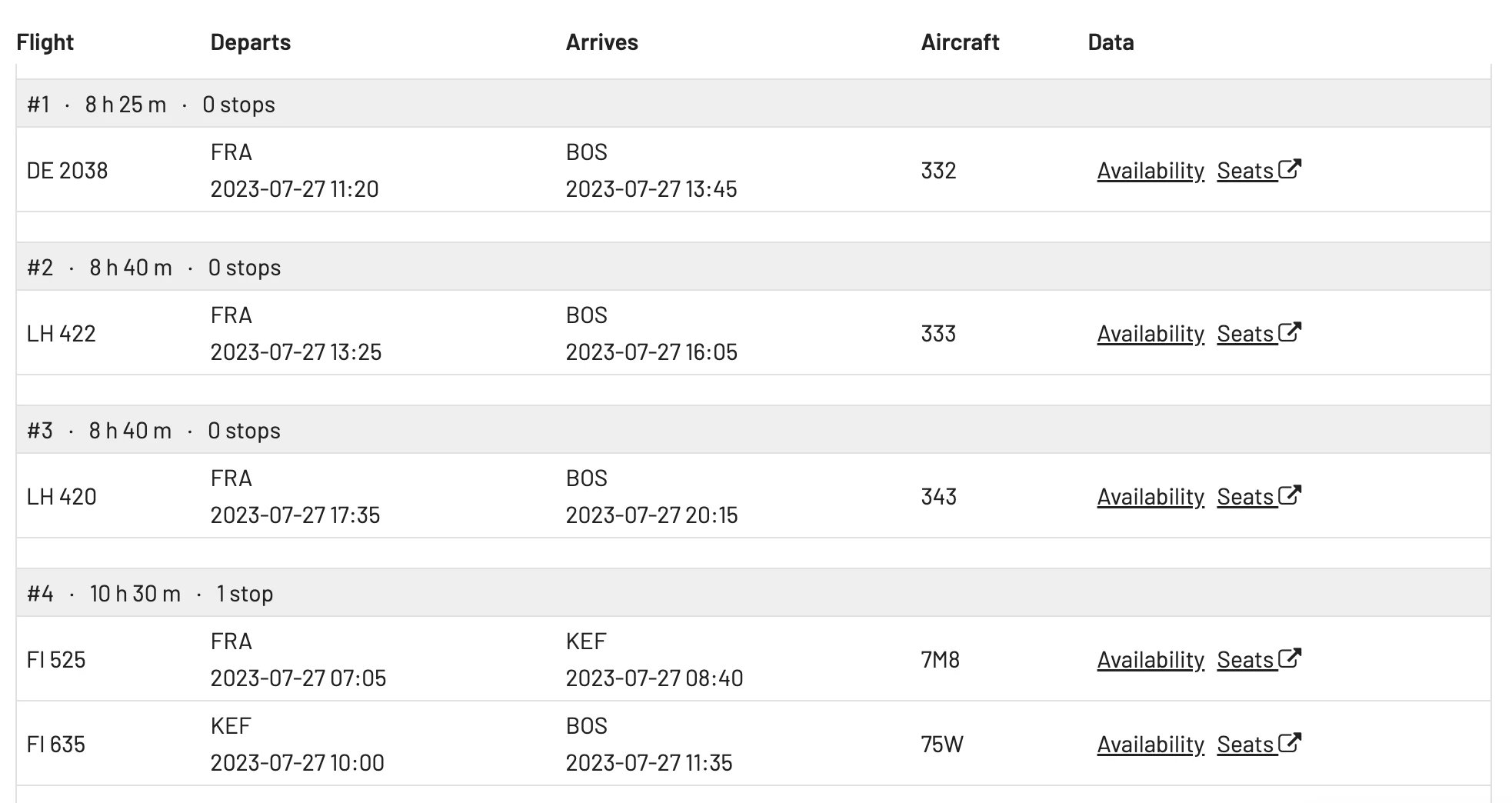
5. Check Real-Time Availability by Booking Class
For more details, click on the Availability link. A new pane will expand below and show you all the availability for each booking class code. A ‘9’ indicates that at least 9 seats are available, while a ‘4’ means exactly 4 seats are available. ‘0’ means that fare bucket is closed.

6. Tap on Seats to view the seat map (optional).
You will be redirected to our Seat Map Tool, and the flight you selected will be pre-populated for you.
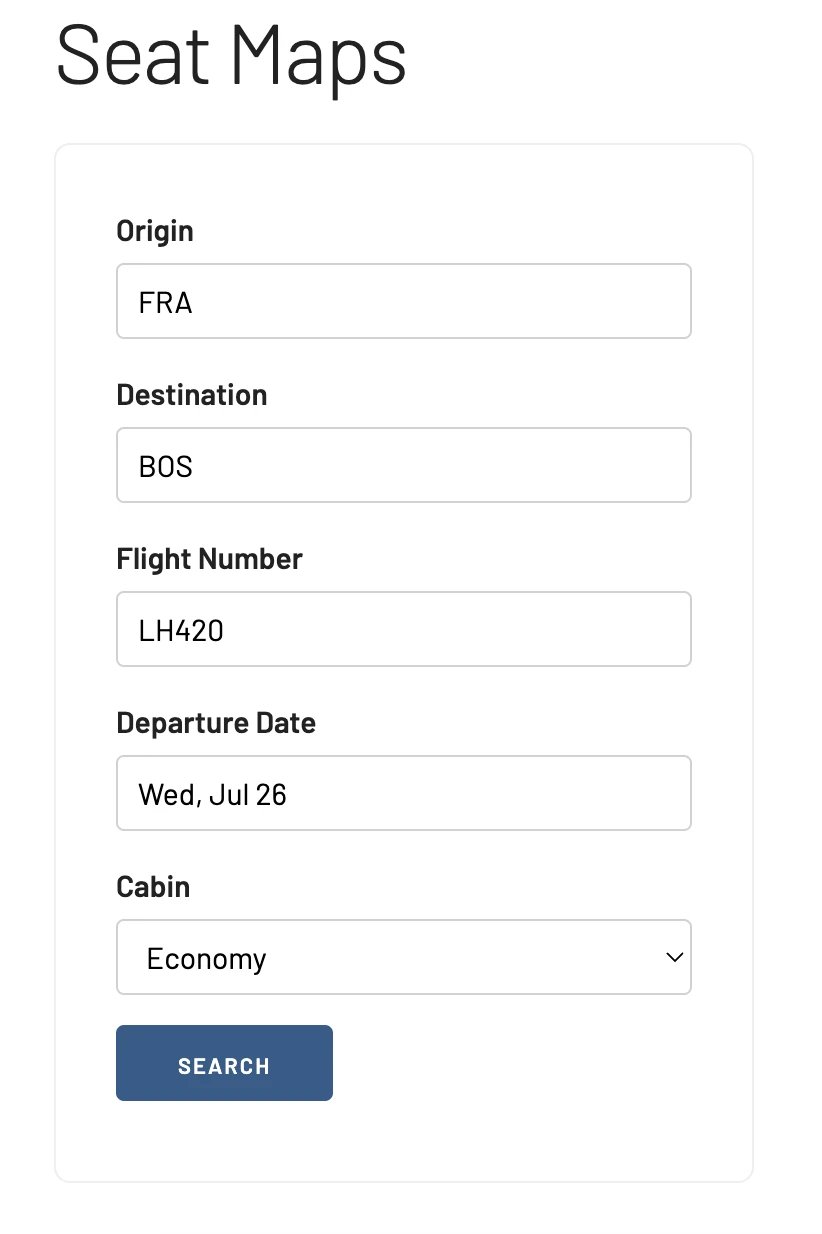
You can hit Search to see the actual seat map for that specific flight and check which seats are available.
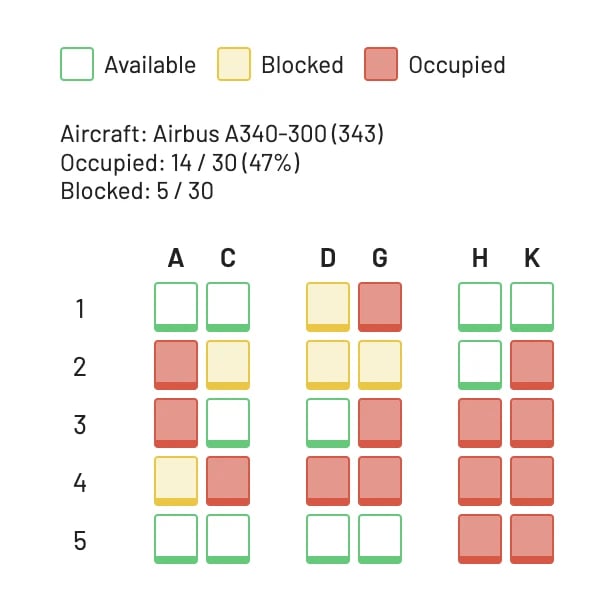
Frequently Asked Questions
FAQ
What's the difference between a booking class and a cabin class?
Cabin Class is the broad category of service (e.g., Economy, Business, First). Booking Class (or Fare Class) is a more specific sub-category within that cabin, indicated by a single letter, which defines the price and rules of your ticket.
What does booking class Y mean on a flight?
Booking class Y almost universally means a full-fare Economy Class ticket. It is the most expensive and flexible type of Economy ticket, typically allowing for free changes and refunds, and it usually earns the maximum number of miles.
How can I find the booking class codes for a specific airline like United or American Airlines?
The best way is to use a tool like AwardFares’ Flight Schedules. It queries the live system and shows you the exact booking classes and seat counts for any flight you search. Alternatively, some advanced booking websites will show the fare class during the booking process.
Can I use this tool to check myidtravel seat availability?
You can’t check employee-specific availability, but you can use it as a powerful complementary tool. By checking the public seat count in each booking class (e.g., Y9, J9), you get a much more accurate picture of how full the flight is than the general indicators on myidtravel, helping you make a smarter decision about which flight to list for.
What does "9" seats available mean in the availability pane?
In airline Global Distribution Systems (GDS), availability is often capped at 9, even if more seats are available. Seeing a ‘9’ in a booking class means there are at least 9 seats available in that fare category. Seeing a lower number (e.g., ‘4’) indicates the exact number of seats available.
Get Started, and Stay Informed
The Flight Schedules tool is a powerful asset for any serious traveler who needs precise, detailed flight information. Whether you’re planning a complex itinerary, tracking a specific fare class, or a staff traveler looking for an edge, it provides the data you need at your fingertips.
With our Gold and Diamond tiers, you can access the Flight Schedules tool and other premium features like unlimited daily searches, alerts, seat maps, and more.
You can try AwardFares for free. We are rolling out new features and improvements regularly, so sign up for our monthly newsletter to stay on top of the latest news, announcements, and pro tips!
Read More
Our guides have all the information you need to be a pro travel hacker and explore the world on points. Here are some related posts you might enjoy:
 Aeromexico Rewards
Aeromexico Rewards Air Canada Aeroplan
Air Canada Aeroplan
 Air France / KLM Flying Blue
Air France / KLM Flying Blue Alaska MileagePlan
Alaska MileagePlan American Airlines AAdvantage
American Airlines AAdvantage Azul Fidelidade
Azul Fidelidade Delta SkyMiles
Delta SkyMiles Etihad Guest
Etihad Guest GOL Smiles
GOL Smiles Jetblue TrueBlue
Jetblue TrueBlue SAS EuroBonus
SAS EuroBonus Turkish Miles&Smiles
Turkish Miles&Smiles United MileagePlus
United MileagePlus Virgin Atlantic Flying Club
Virgin Atlantic Flying Club Virgin Australia Velocity
Virgin Australia Velocity